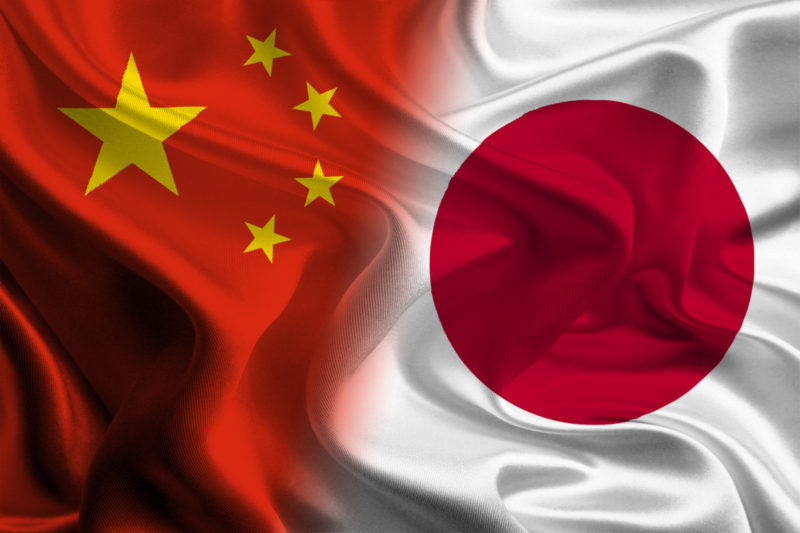For most Chinese, memory of relations with Japan is a reminder of “Century of Humiliation” (1839 -1939). The two Sino-Japanese wars (1894-95 and 1937-45) in particular are amongst the most mortifying tales for the people of China. The defeat of Japan in WW2 and its subsequent demilitarisation was a big relief for the CCP, as its toughest adversary was silenced.
Japan’s pacifism and downgrading military to ‘Self Defence Force’ provided a sense of security to Chinese planners, but their leadership always regarded Japan as a sleeping demon, which should not be disturbed. Thus, China was never too vocal about territorial issues with Japan (Senkaku Islands) and its military kept misadventures in Japanese waters/ airspace under check. They knew that the military might of Japan is leashed by a frail rope of ‘Article 9 of Japanese Constitution’ – a rope bound to break in due course of time. Deep in their hearts, China’s naval leadership was expecting Japan to emerge as a competitor in the near seas in future, but was hoping that it will not happen in their time. However, the recent misadventures of Shandong Carrier Battle Group near Miyako Islands set the records straight.
Japan Flexing Muscles
Xi Jinping’s leadership marked CCP’s obstinance of Taiwan’s reunification and insatiable desire for expansion. China’s behaviour, declining American supremacy and emerging geopolitical situation seems to have made Japan uncertain about the existing security mechanism.
In December 2022 Japan issued ‘Three Strategic Documents’ to highlight the need for reviewing existing policy of maintaining “only counter attack capabilities”. It also emphasized the need to build realistic expertise to safeguard against the increasing Chinese aggression in Indo-Pacific region. This document was supported by a 26.3% year over year increase in defence budget.
Following this, Japan’s political/military leadership have started discussions on inducting nuclear capabilities and reviewing the “Three Non-Nuclear Principles” (TNNP) of the nation. Induction of nuclear submarines is being discussed with greater momentum. Apart from this, extending use of Japanese Bases for USA’s nuclear weapon carrying aircraft and submarines has already commenced.
At sea, Japanese Maritime Self Defence Force (JMSDF) is complementing the spirit of the “Three Strategic Documents”. They have started aggressively challenging Chinese Navy and Coast Guard ships operating close to Senkaku Islands and Okinawa. Before the recent Shandong incident, JMSDF had forced a Chinese submarine to surface and raise flag near Senkaku Islands. And operation of F-35 B fighters from the Japanese Ship Izumo could be signalling towards induction of Aircraft Carriers in future.
These incidents are an indication of JMSDF’s commitment to challenge PLA navy’s unlawful actions. The message is clear – Japan will no longer be a spectator to China’s ‘might is right’ tactics.
Why is Chinese Navy Nervous?
Retired Vice Admiral Toshiyaki Ito, former Chief of JMSDF, have highlighted China’s weaknesses in defensive operations like Anti-Submarine and Mine Warfare. As per him, Chinese strategy is based on “Active Defence” or A2AD using shore based ballistic missiles to keep adversary out of first island chain. Japan as an opponent in the ‘decisive’ war has not been catered in their strategy, but now it is emerging as a new challenge.
Another Japanese strategist, Professor Toshi Yoshihara (US Naval War College) feels that the way JMSDF is building its procedures and inventory, using combination of submarines, mines, asymmetric attacks and shore-based antiship missiles/fighters, they can easily tie down Chinese Navy inside the first chain and restrict their freedom of movement in East China Sea.
JMSDF is a world leader in the field of Anti-Submarine and Mine Warfare. It operates some of the best conventional submarines in the world, and has inherited finest war fighting traditions from the Imperial Japanese Navy. JMSDF maintains close relations with the best Navies in the world including that of US, India, South Korea and Australia, all of whom are being challenged by China and therefore are keen to partner with each other. Japan’s geographic location, technological superiority, maritime power and a new political outlook, coupled with strength it derives from capabilities of its partners makes it an extremely dangerous opponent for China.
74th Naval Anniversary Should Be More Than Just Cake Cutting
It is evident that Japan is emerging as a new challenge for China. JMSDF has always been a highly professional and potent Navy, but was reluctant to display its prowess. But geopolitical uncertainty and China’s actions has forced Japan to re-think. China’s overall strategy does not cater for an aggressive Japan and Chinese Navy is unprepared for a powerful opponent in their backyard (possibly with Aircraft Carriers and Nuclear Submarines in the near future). If Japan goes nuclear, the power balance in North Pacific will topple and first to be affected will be China.
In this backdrop, Quadrilateral Security Dialogue or QUAD Alliances also assumes significance. While so far the QUAD has strayed clear of portraying itself as a military coalition, it nevertheless remains an ‘alliance in being’ of like-minded partners facing the China menace. Across the wide Indo-Pacific canvas, there is perceptible discomfort in the manner in which China has chosen to portray its rise. With India increasingly being viewed as a natural ally in the Indian Ocean and Japan shedding its ‘Self Defence Force’ image, China’s freedom of adventure in the Indo-Pacific will certainly be challenged.
On its 74th Anniversary, the Chinese Navy must do more than just ‘Cake Cutting’. It is time to finally display respect for international law and exchange courtesies with other countries as is expected from a world power that it claims to be.

